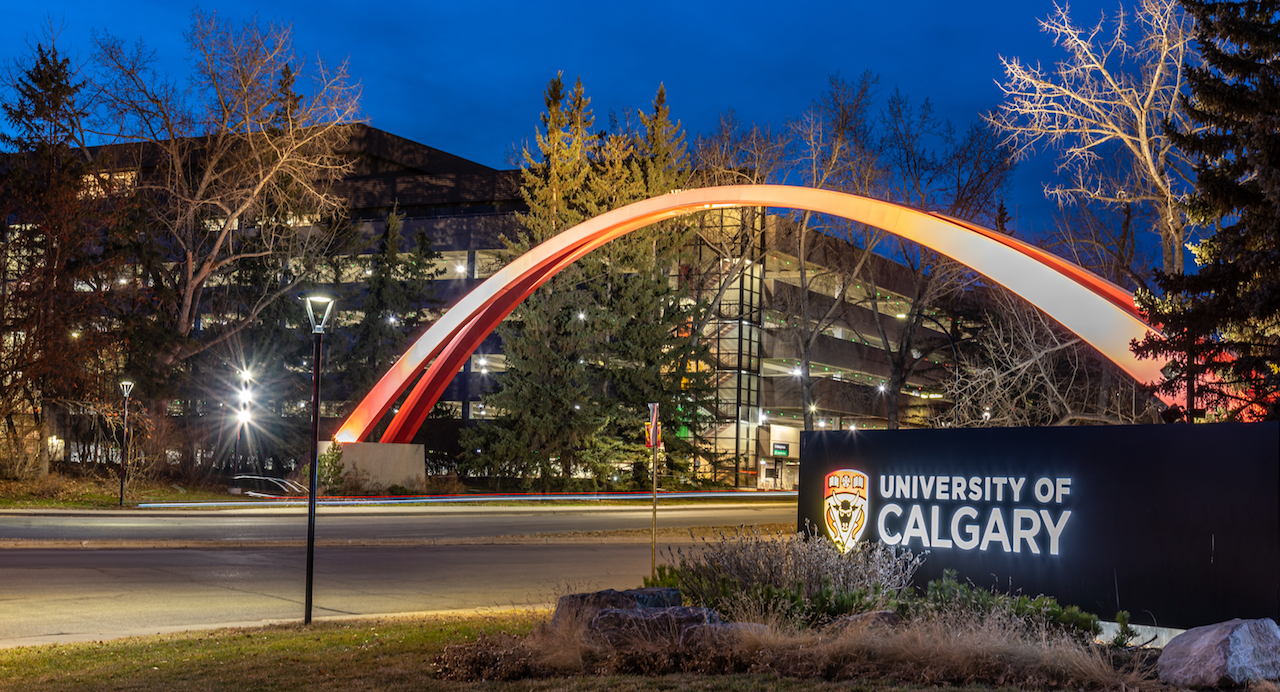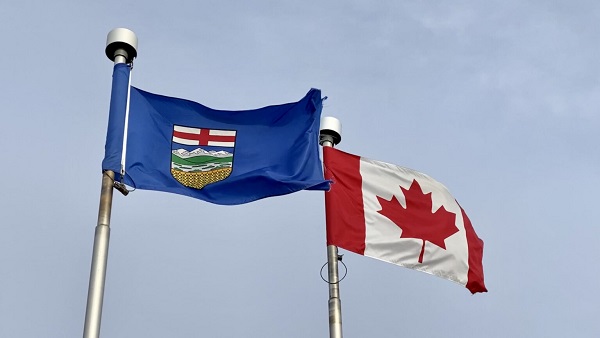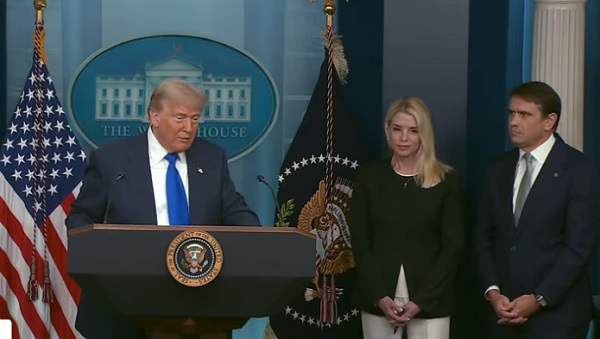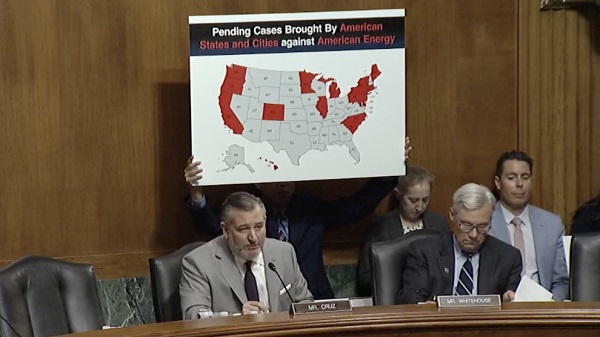Alberta
Getting the Next Generation of Alberta Youth Excited about Renewable Energy with Eavor Technologies Inc.

In February 2021, oil giants bp and Chevron, along with a number of other notable groups announced their decision to back Calgary-based geothermal company Eavor Technologies Inc. through a $40 million funding round. Since then, discussions regarding the pivot away from oil and gas into renewables have captured national interest. Is this a sign the shift is officially underway?
 Eavor Technologies is a local geothermal tech company making international waves in the global renewable energy arena. By revolutionizing the approach to geothermal energy, Eavor’s technology has eradicated several of the costly, inefficient measures associated with traditional geothermal. Without experiencing the limitations of traditional geothermal, nor being subject to intermittency issues associated with wind and solar, Eavor’s solution is one the world sorely needs.
Eavor Technologies is a local geothermal tech company making international waves in the global renewable energy arena. By revolutionizing the approach to geothermal energy, Eavor’s technology has eradicated several of the costly, inefficient measures associated with traditional geothermal. Without experiencing the limitations of traditional geothermal, nor being subject to intermittency issues associated with wind and solar, Eavor’s solution is one the world sorely needs.
Alberta Minister of Jobs, Economy and Innovation Doug Schweitzer recently commended Eavor in an address discussing ongoing economic diversification in Alberta, noting private sector investment in provincial geothermal wells. “Eavor Technologies of Calgary has raised significant money for this, and plans to produce enough geothermal power to heat thousands of homes over the next decade,” said Schweitzer.
In light of recent developments in the oil and gas industry, Eavor’s ongoing mission to harness the Earth’s geothermal potential to provide reliable, scalable, baseload power for millions of homes in the coming years has taken on a new key component.
Following the announcement, Eavor has taken several steps to further invest in academia in Alberta through the launch of an ongoing educational campaign aimed at engaging Alberta youth in the future of renewable energy in the province and across the nation. As a local, cutting edge technology company on a mission to positively change the world, Eavor recognizes the importance of encouraging the bright members of the young generation to ask questions and actively participate in the ongoing changes occurring in the energy industry.
“Eavor has developed a unique renewable energy solution by applying established or proven technologies in an innovative and creative way,” says Bailey Schwarz, Lead Engineer for Eavor. “Educating and engaging the next generation will encourage creative thinking and problem solving in the energy sector that will keep building on these innovations in every sector.”
 Earlier this month, Eavor Technologies Inc. announced a multi-year research and development partnership with the University of Calgary Department of Chemical and Petroleum Engineering and the National Science and Engineering Research Council (NSERC) valued at almost $1 million.
Earlier this month, Eavor Technologies Inc. announced a multi-year research and development partnership with the University of Calgary Department of Chemical and Petroleum Engineering and the National Science and Engineering Research Council (NSERC) valued at almost $1 million.
This partnership will focus on building on existing Alberta drilling technology to effectively further applications for geothermal exploration and development, while educating the public and creating new jobs for Albertans.
Engaging young adults at the university level is a key part of Eavor’s investment in geothermal education and development in Alberta, however, it doesn’t end there.
On March 10, 2021, team members from Calgary tech company Eavor Technologies Inc. visited Bearspaw Christian School in northwest Calgary to present their cutting-edge closed loop geothermal technology to the 10th grade science classes.
The presentation was led by Eavor’s Lead Engineer Bailey Schwarz, Senior Business Development Leader Neil Ethier and Chief Business Development Officer, Paul Cairns.

Eavor Lead Engineer Bailey Schwarz presents to Students at Bearspaw Christian School
The team introduced Eavor’s mission, discussed the differing forms of renewable energy and explained the Eavor-Loop in relation to traditional geothermal. Bailey Schwarz then covered thermodynamics before introducing Eavor-Lite, Eavor’s successful, third party validated demonstration project located in Rocky Mountain House, Alberta.
“The presentations went really well,” says Schwarz, “I was really impressed with the interest the students showed and the challenging questions they asked our team.”
The presentation to Bearspaw Christian School is part of Eavor’s ongoing educational outreach campaign designed to get the younger generation excited about ongoing developments in the field of renewable energy. As future scientists, engineers, and entrepreneurs, the bright students in Mr. Dallas Peterson’s 10th grade science class were captivated by Eavor’s presentation. They kept the team on their toes by asking endless questions to better understand the Eavor-Loop technology. “We were all really impressed by all the questions,” says Paul Cairns, CBDO of Eavor, “we really want to encourage these young kids to think differently.”
Cairns closed the presentation by introducing a two-part Eavor Challenge. Part one is an opportunity for students to further explore Eavor’s global geothermal energy potential by determining the best possible location for a future Eavor-Loop. They were given a curated list of potential locations, which need to be ranked according to feasibility based on geological, economical, and socio-political factors – this list includes Mars.
 Eavor has partnered with Bearspaw Christian School to continue the challenge into the next school year, when a science research option being offered by Mr. Peterson will give students the chance to explore Eavor in extreme depth.
Eavor has partnered with Bearspaw Christian School to continue the challenge into the next school year, when a science research option being offered by Mr. Peterson will give students the chance to explore Eavor in extreme depth.
“I hope they come away from this experience excited for the future, and feeling that they will have an important part to play,” says Mr. Peterson, Bearspaw Secondary Science teacher, “I believe we need to foster the conversation with our youth surrounding the question, ‘in what ways could we envision energy alternatives?’ It’s so important to instill a hope for the future.”
To encourage creativity alongside education, Eavor will be awarding an Oculus Quest Virtual Reality Headset, pre-loaded with the Eavor-Lite Virtual Tour, to one student from each semester who exceeds the challenge.
Eavor prides itself on being at the forefront of renewable energy development in Alberta, and investment and education for Alberta’s youth and young adults is a crucial step in ensuring a successful, prosperous future for the province. Students in grade school, high school, university and graduate school all have an important part to play in furthering provincial and national goals surrounding the pivot towards renewable energy.
“Investing in our youth is investing in our future,” says Paul Cairns, Chief Business Development Officer for Eavor Technologies. Eavor is proud to play a part in getting the next generation of Alberta youth excited and engaged in renewable technology, and geothermal energy development.
University of Calgary Positions
The University of Calgary is hiring several positions for its multi-year R&D project with Eavor Technologies.
- Research Associate in Drilling Operations, Drilling Performance Optimization, Data Analytics, Drilling Modelling and Control. M.Sc. in engineering required, industry experience and/or Ph.D. preferred.
- Postdoctoral Fellow in Drilling Mechanics, Bit-Rock interaction Modelling and Non-Linear System Dynamics and Control. A recent Ph.D. in engineering required.
- Three Ph.D. Research Assistantships in:
1) Hydraulic percussion hammer modelling
2) Physics-informed data-driven model development
3) Estimation techniques for digital twinning
To apply, please send your CV, Cover Letter, and a Writing Sample to Roman Shor at roman.shor@ucalgary.ca
Eavor’s virtual tour and link to the Oculus Quest App can be experienced here: https://eavor.com/eavor-lite-virtual-tour
For more stories, visit Todayville Calgary.
Alberta
Alberta judge sides with LGBT activists, allows ‘gender transitions’ for kids to continue

From LifeSiteNews
‘I think the court was in error,’ Alberta Premier Danielle Smith has said. ‘There will be irreparable harm to children who get sterilized.’
LGBT activists have won an injunction that prevents the Alberta government from restricting “gender transitions” for children.
On June 27, Alberta King’s Court Justice Allison Kuntz granted a temporary injunction against legislation that prohibited minors under the age of 16 from undergoing irreversible sex-change surgeries or taking puberty blockers.
“The evidence shows that singling out health care for gender diverse youth and making it subject to government control will cause irreparable harm to gender diverse youth by reinforcing the discrimination and prejudice that they are already subjected to,” Kuntz claimed in her judgment.
Kuntz further said that the legislation poses serious Charter issues which need to be worked through in court before the legislation could be enforced. Court dates for the arguments have yet to be set.
READ: Support for traditional family values surges in Alberta
Alberta’s new legislation, which was passed in December, amends the Health Act to “prohibit regulated health professionals from performing sex reassignment surgeries on minors.”
The legislation would also ban the “use of puberty blockers and hormone therapies for the treatment of gender dysphoria or gender incongruence” to kids 15 years of age and under “except for those who have already commenced treatment and would allow for minors aged 16 and 17 to choose to commence puberty blockers and hormone therapies for gender reassignment and affirmation purposes with parental, physician and psychologist approval.”
Just days after the legislation was passed, an LGBT activist group called Egale Canada, along with many other LGBT organizations, filed an injunction to block the bill.
In her ruling, Kuntz argued that Alberta’s legislation “will signal that there is something wrong with or suspect about having a gender identity that is different than the sex you were assigned at birth.”
She further claimed that preventing minors from making life-altering decisions could inflict emotional damage.
However, the province of Alberta argued that these damages are speculative and the process of gender-transitioning children is not supported by scientific evidence.
“I think the court was in error,” Alberta Premier Danielle Smith said on her Saturday radio show. “That’s part of the reason why we’re taking it to court. The court had said there will be irreparable harm if the law goes ahead. I feel the reverse. I feel there will be irreparable harm to children who get sterilized at the age of 10 years old – and so we want those kids to have their day in court.”
READ: Canadian doctors claim ‘Charter right’ to mutilate gender-confused children in Alberta
Overwhelming evidence shows that persons who undergo so-called “gender transitioning” procedures are more likely to commit suicide than those who are not given such irreversible surgeries. In addition to catering to a false reality that one’s sex can be changed, trans surgeries and drugs have been linked to permanent physical and psychological damage, including cardiovascular diseases, loss of bone density, cancer, strokes and blood clots, and infertility.
Meanwhile, a recent study on the side effects of “sex change” surgeries discovered that 81 percent of those who have undergone them in the past five years reported experiencing pain simply from normal movements in the weeks and months that followed, among many other negative side effects.
Alberta
Why the West’s separatists could be just as big a threat as Quebec’s

By Mark Milke
It is a mistake to dismiss the movement as too small
In light of the poor showing by separatist candidates in recent Alberta byelections, pundits and politicians will be tempted to again dismiss threats of western separatism as over-hyped, and too tiny to be taken seriously, just as they did before and after the April 28 federal election.
Much of the initial skepticism came after former Leader of the Opposition Preston Manning authored a column arguing that some in central Canada never see western populism coming. He cited separatist sympathies as the newest example.
In response, (non-central Canadian!) Jamie Sarkonak argued that, based upon Alberta’s landlocked reality and poll numbers (37 per cent Alberta support for the “idea” of separation with 25 per cent when asked if a referendum were held “today”), western separation was a “fantasy” that “shouldn’t be taken seriously.” The Globe and Mail’s Andrew Coyne, noting similar polling, opined that “Mr. Manning does not offer much evidence for his thesis that ‘support for Western secession is growing.’”
Prime Minister Mark Carney labelled Manning’s column “dramatic.” Toronto Star columnist David Olive was condescending. Alberta is “giving me a headache,” he wrote. He argued the federal government’s financing of “a $34.2-billion expansion of the Trans Mountain pipeline (TMX)” as a reason Albertans should be grateful. If not, wrote Olive, perhaps it was time for Albertans to “wave goodbye” to Canada.
As a non-separatist, born-and-bred British Columbian, who has also spent a considerable part of his life in Alberta, I can offer this advice: Downplaying western frustrations — and the poll numbers — is a mistake.
One reason is because support for western separation in at least two provinces, Alberta and Saskatchewan, is nearing where separatist sentiment was in Quebec in the 1970s.
In our new study comparing recent poll numbers from four firms (Angus Reid Institute, Innovative Research Group, Leger, and Mainstreet Research), the range of support in recent months for separation from Canada in some fashion is as follows, from low to high: Manitoba (6 per cent to 12 per cent); B.C. (nine per cent to 20 per cent); Saskatchewan (20 per cent to 33 per cent) and Alberta (18 per cent to 36.5 per cent). Quebec support for separation was in a narrow band between 27 per cent and 30 per cent.
What such polling shows is that, at least at the high end, support for separating from Canada is now higher in Saskatchewan and Alberta than in Quebec.
Another, even more revealing comparison is how western separatist sentiment now is nearing actual Quebec votes for separatism or separatist parties back five decades ago. The separatist Parti Québécois won the 1976 Quebec election with just over 41 per cent of the vote. In the 1980 Quebec referendum on separation, “only” 40 per cent voted for sovereignty association with Canada (a form of separation, loosely defined). Those percentages were eclipsed by 1995, when separation/sovereignty association side came much closer to winning with 49.4 per cent of the vote.
Given that current western support for separation clocks in at as much as 33 per cent in Saskatchewan and 36.5 per cent in Alberta, it begs this question: What if the high-end polling numbers for western separatism are a floor and not a ceiling for potential separatist sentiment?
One reason why western support for separation may yet spike is because of the Quebec separatist dynamic itself and its impact on attitudes in other parts of Canada. It is instructive to recall in 1992 that British Columbians opposed a package of constitutional amendments, the Charlottetown Accord, in a referendum, in greater proportion (68.3 per cent) than did Albertans (60.2 per cent) or Quebecers (56.7 per cent).
Much of B.C.’s opposition (much like in other provinces) was driven by proposals for special status for Quebec. It’s exactly why I voted against that accord.
Today, with Prime Minister Carney promising a virtual veto to any province over pipelines — and with Quebec politicians already saying “non” — separatist support on the Prairies may become further inflamed. And I can almost guarantee that any whiff of new favours for Quebec will likely drive anti-Ottawa and perhaps pro-separatist sentiment in British Columbia.
There is one other difference between historic Quebec separatist sentiment and what exists now in a province like Alberta: Alberta is wealthy and a “have” province while Quebec is relatively poor and a have-not. Some Albertans will be tempted to vote for separation because they feel the province could leave and be even more prosperous; Quebec separatist voters have to ask who would pay their bills.
This dynamic again became obvious, pre-election, when I talked with one Alberta CEO who said that five years ago, separatist talk was all fringe. In contrast, he recounted how at a recent dinner with 20 CEOs, 18 were now willing to vote for separation. They were more than frustrated with how the federal government had been chasing away energy investment and killing projects since 2015, and had long memories that dated back to the National Energy Program.
(For the record, they view the federal purchase of TMX as a defensive move in response to its original owner, Kinder Morgan, who was about to kill the project because of federal and B.C. opposition. They also remember all the other pipelines opposed/killed by the Justin Trudeau government.)
Should Canadians outside the West dismiss western separatist sentiment? You could do that. But it’s akin to the famous Clint Eastwood question: Do you feel lucky?
Mark Milke is president and founder of the Aristotle Foundation for Public Policy and co-author, along with Ven Venkatachalam, of Separatist Sentiment: Polling comparisons in the West and Quebec.
-

 Automotive1 day ago
Automotive1 day agoElectric vehicle sales are falling hard in BC, and it is time to recognize reality.
-

 Automotive1 day ago
Automotive1 day agoPower Struggle: Electric vehicles and reality
-

 Alberta5 hours ago
Alberta5 hours agoAlberta Independence Seekers Take First Step: Citizen Initiative Application Approved, Notice of Initiative Petition Issued
-

 Business1 day ago
Business1 day agoTrump on Canada tariff deadline: ‘We can do whatever we want’
-

 Business7 hours ago
Business7 hours agoCanada Caves: Carney ditches digital services tax after criticism from Trump
-

 Brownstone Institute2 days ago
Brownstone Institute2 days agoFDA Exposed: Hundreds of Drugs Approved without Proof They Work
-

 Crime7 hours ago
Crime7 hours agoSuspected ambush leaves two firefighters dead in Idaho
-

 Energy1 day ago
Energy1 day agoChina undermining American energy independence, report says




